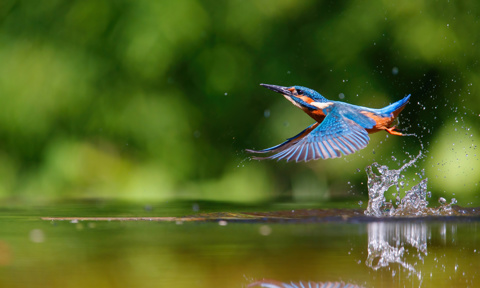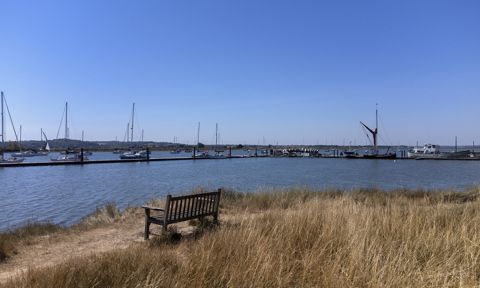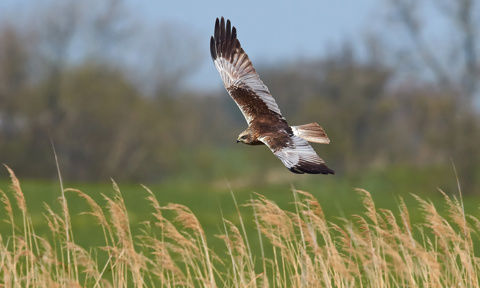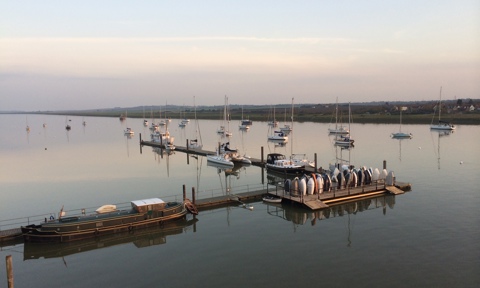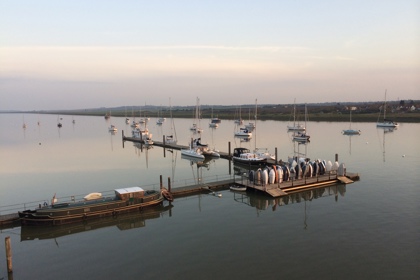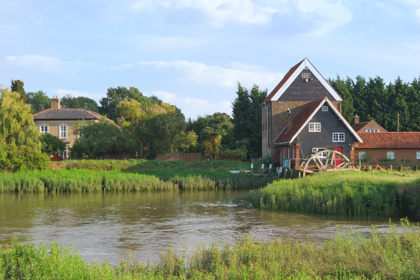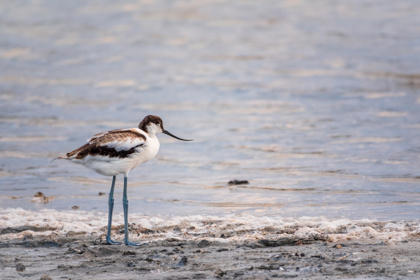Calling all nature lovers!
If you love the outdoors; and as yachting enthusiasts, berth holders and visitors to Fambridge Yacht Haven we’re guessing you do; you’ll appreciate the huge breadth of marine wildlife on display here. Nature’s colourful characters who reside and return year on year, making the region one of huge environmental importance.
The River Crouch is one of the most picturesque in Essex. Home to a multitude of birds and wildlife, supported and monitored by our neighbouring Blue House Farm Nature Reserve. The perfect base from which to learn more about the lives and challenges of the different species who make up this stunning estuary’s ecosystem.
So, grab your binoculars and we’ll guide you through our top 7 species of birds and wildlife to look out for along this special stretch of waterway.

1. Emporer Dragonfly (Anax imperator)
The beautiful dragonfly is surprisingly large and fast-flying. At home patrolling all manner of waterways: from ponds and lakes to canals, ditches, and flooded gravel pits. They skit above the waterline hunting for almost any flying insect and will even eat smaller dragonflies! The male is striking in his deep blue armour and the female sports a greenish abdomen. Best time to spot them? From early June to late August.

2. Kingfisher (Alcedo atthis)
With its vibrant electric blue and orange plumage, the stunning little Kingfisher is a true natural delight. They might be easy to recognise, sitting silently on a branch, watching for their prey to swim by, but they’re extremely quick. Blink and you’ll miss him! Known to move at sudden speeds, the Kingfisher will dart along the riverbank in search of the next meal. The best time to spot them is during the summer months, particularly in July and August, when they’re active along the riverbanks.

3. Marsh Harrier (Circus aeruginosus)
Talented acrobats of the skies, the Marsh Harriers are a protected species, at one time rare but strengthening in numbers beyond East Anglia, to other areas of the UK. With their distinctive V-shaped wing profile – sometimes spanning over a metre - they glide effortlessly above the reed beds, whipping gracefully across the skies as they search for prey along the marshes. They come to breed in April and leave in October to winter in the warmer African climes. The males show off their fabulous aerobatic skills in an attempt to woo the females during breeding season; rotating at great heights then diving in a series of dramatic tumbles; sometimes locking talons with a female mid-air.

4. Avocet (Recurvirostra avosetta)
The elegant Avocet was once extinct in the UK and has seen an amazing recovery in recent years. Similar in size to the oystercatcher, the Avocet can be spotted strutting gracefully in the shallow waters of the River Crouch. Recognisable by their distinct upward-curving bills and striking black and white feathers. Spring and summer are the best times to see their courtship displays and if you’re lucky catch them fiercely defending their nesting territories.

5. Grey Seal (Halichoerus grypus)
Carefully train your eyes across the water to catch a glimpse of a Grey Seal popping its head above the surface or a colony on the shore, basking in the sun. Slightly larger than the common seal, these marine mammals are real heart-knappers, with their soulful eyes and charming curiosity. And there’s something very special about Essex Grey Seals, they’re known for turning bright orange! It doesn’t harm them but their fur picks up particles of iron-oxide from the local mud. Find out more here and remember, when seal-spotting, please keep a safe distance.

6. Brent Goose (Branta bernicla)
The Crouch estuary is a designated international site of importance for Brent Geese. Arriving from Arctic breeding grounds, these small migratory birds with their dark tummies, make the River Crouch their winter haven. The best time to observe them is between October and February when they get together in large numbers. Apparently, as many as a quarter of the world’s population come to the area before migrating in March. The Essex Wildlife Trust have been monitoring the Brent Geese since 2016, tracking their journey from our neighbouring Blue House Farm and out across the Baltic Sea.

7. Water Vole (Arvicola amphibius)
You could say Britain's most endearing rodent is the charming Water Vole, which nests and forages along the banks of the River Crouch. The Essex Wildlife Trust launched the Essex Water Vole Recovery Project in 2007 to protect these fluffy creatures, as they have been the UK’s fastest declining mammal. Thanks to the work of the project, coastal populations remain stable, so you might be lucky enough to spot them scuttling among the reeds and constructing their burrows. Spring and summer are the best times to glimpse these delightful residents in action.
Thanks to Vicks Ward for the research.
And we've only just skimmed the surface...
There are so many other colourful characters who share the shores of the River Crouch. But Fambridge Yacht Haven is the perfect base from which to get to know the River and its charming inhabitants a little better. Every one contributing to the region's rich biodiversity.
When venturing near these wildlife havens, please remember to keep your distance and be respectful of each bird and mammal’s natural environment. By doing so, we are all helping to ensure the protection and preservation of the remarkable creatures who live here. You can download a copy of The Green Blue's Green Wildlife Guide for Boaters here.
Let us know if you’ve spotted any of our estuary neighbours and do share photos. And if you’d like us to add other species to the list, let us know, so we can share more about our natural habitat with the Fambridge Yacht Haven community.

